PAINTINGS
AJANTA
CAVE PAINTINGS
the many-splendoured delights of Ajanta compiled by Subramanian Swaminathan
e-mail: sswami99@gmail.com
September 2007
Phases of Ajanta Art
Pre-Classical Period (2nd-1st
Centuries BC)
Classical Period (4th-5th
Centuries AD)
Period of Mannerism (5th-6th
Centuries AD)
Baroque Period (Mid-6th
Century AD)
Period of Decline (End-6th
Century AD)
In most forms of art one may discern
a gradual and natural progression. A lack of experience in making
and employing tools, in narration etc, is generally the beginning.
This is often called archaic style.
Then follows a mature phase, a phase
of quiet dignity without excesses; and the artists prefer studied dignity
and what they call 'good taste'. This is the classical phase.
Repetition of ideas, called mannerism
is perhaps the next stage to be followed by over-ornamentation, a style
known as baroque.
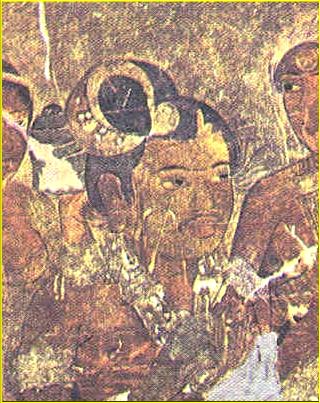
archaic style
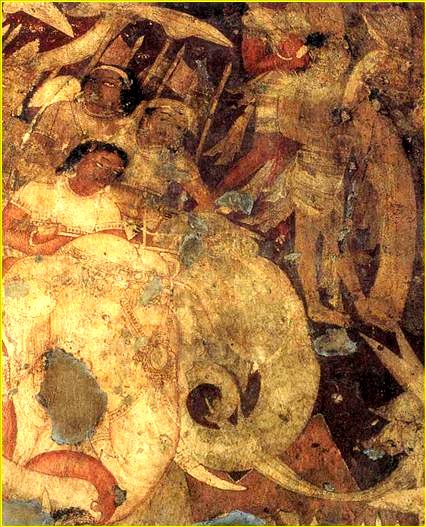
classical phase
It is then the decline sets in.
By sheer chance, the development of style from the beginning to its final
decline can be witnessed within the physical limits of Ajanta. In
this respect Ajanta has no parallel.
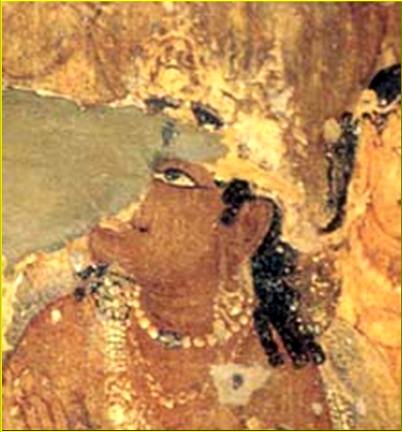
baroque

decline
Pre-classical Period
(2nd-1st centuries BC)
The earliest paintings of Ajanta
of the 2nd-1st century BC cannot be classified as archaic. These
paintings present lively men and animals. They have already entered
the transitional period that was to carry them on to the classical phase.
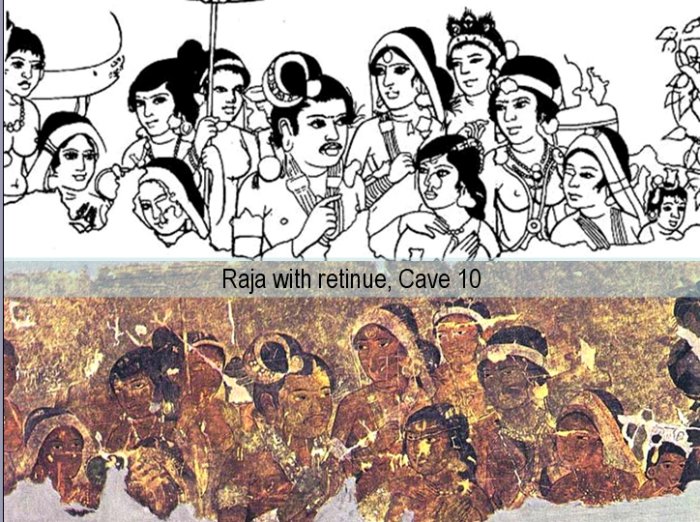
Raja with retinue, Cave 10

Only a line sketch of this grand
composition, belonging to the
same period is availableto appreciate
the lost glory.
Shad-danta Jataka, Cave 10
Classical Period
(4th-5th centuries AD)
This style means perfect mastery
of the subject. Everything is idealised, realism is only for creating
things of beauty and perfection. There is a dignity and nobility, and allows
no exaggeration, no excess, no overstatement and no dramatisation.
Calm, unobtrusive modelling and gentle,
the swaying movement of the characters bear the stamp of the classical
period. A wash technique, called airika creating an illusion of depth
is employed here.
The Prince is informing his wife
of his impending exile and is offering wine to steady her. The posture
of the couple and the sombre colours,
make the painful scene striking.
Belonging to the classical period, the scene brings out the emotional atmosphere
effectively.

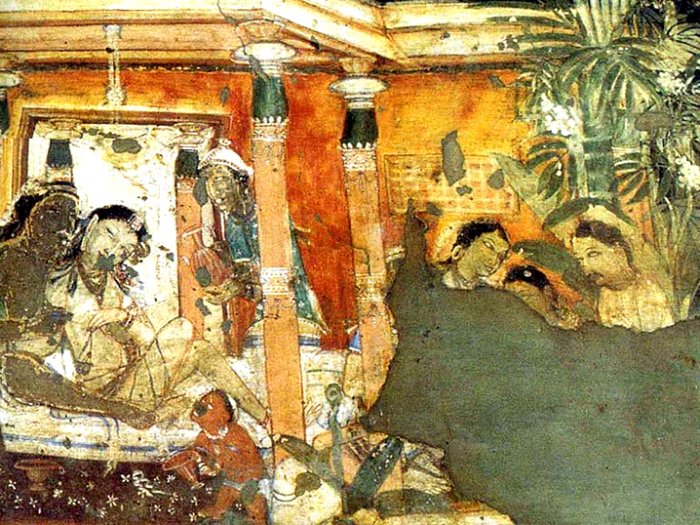
The Prince is informing his
wife
of his impending exile
Visvantara Jataka, Cave 17
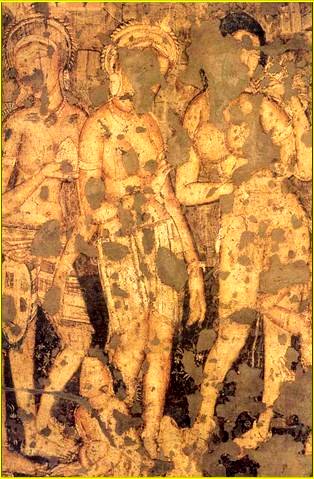
Votaries with offerings, Cave
2
Period of Mannerism
(5th-6th centuries AD)
A departure from classicism can
be seen in monotony in the sitting posture and in the overcrowding.
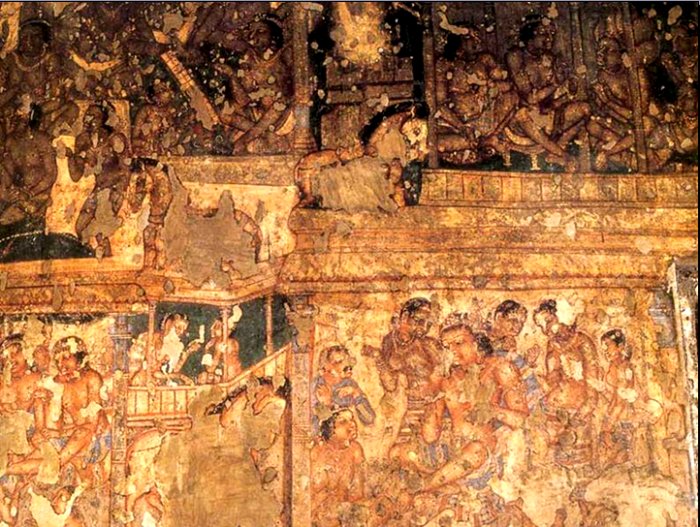
Raja with retinue, Cave 10
Baroque Period
(Mid-6th century AD)
Baroque is a style of over-ornamentation
and exaggeration, Action takes place in a maze of pillars in royal
pavilions. The eye-slits are stretched out of all proportion. Men
look effeminate and women exaggeratedly feminine. Both men and women
wear excessive ornaments.
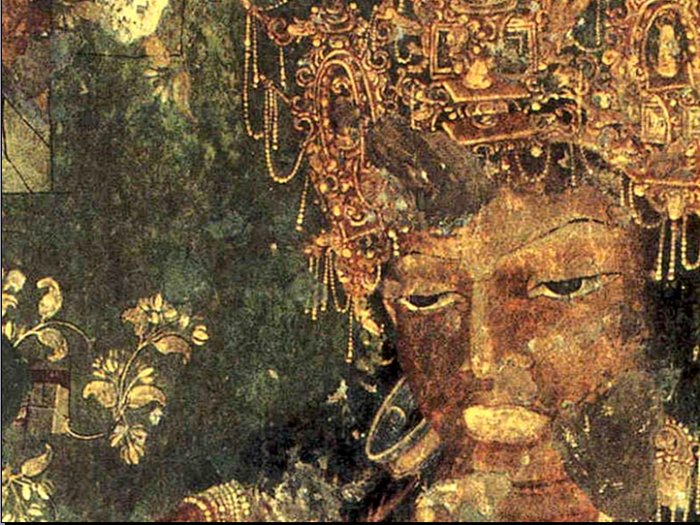
The Bodhisattva is heavily bejewlled
and
His eyes elongated out of proportion
Bodhisattva Avalokiteshvara,
Cave 1
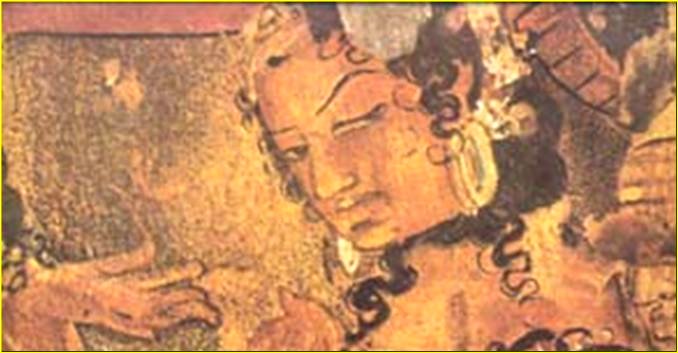
The eye-slits are stretched
out of all proportion
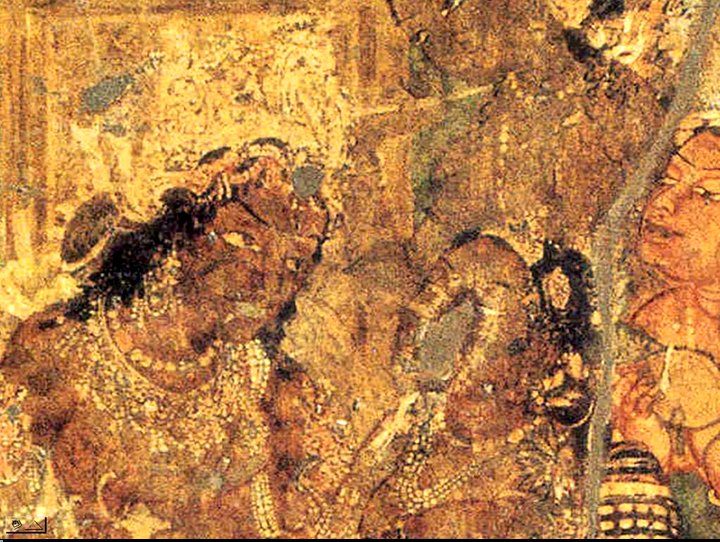
Maha-janaka Jataka, Cave 1
Period of Decline
(End-6th century AD)
Artistic standards were in the decline
from the end of the 6th century. Mercifully this phase did not last
long, for the Ajanta caves were soon abandoned forever, for reasons unknown
The poses are now exaggerated with
heavy heads, elongated eyes, thin legs, superfluous hand gestures etc.
The composition is too crowded. The execution becomes careless.
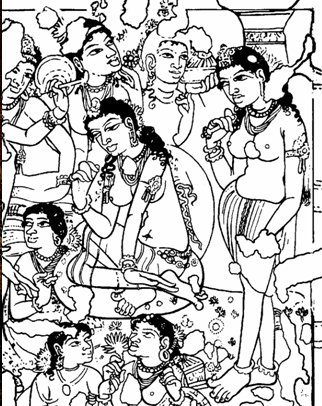
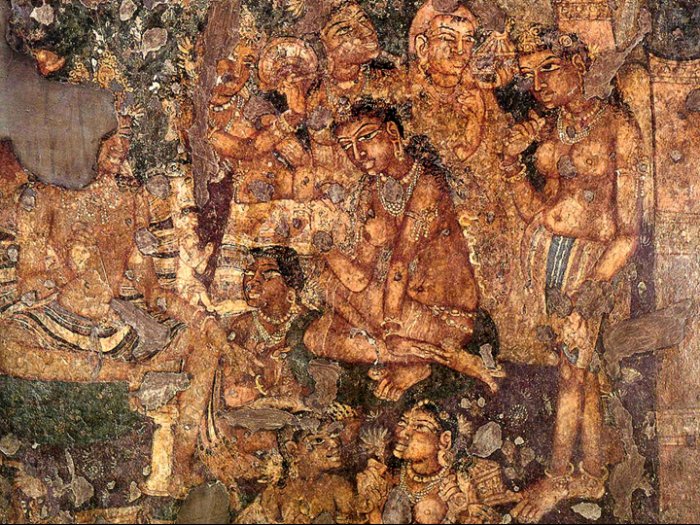
Women in a Palace Scene, Cave
1
The figures of the Buddhas came
to be enclosed in separate cubicles. The
presentation of figures of the Buddhas, lacks refinement and finish.
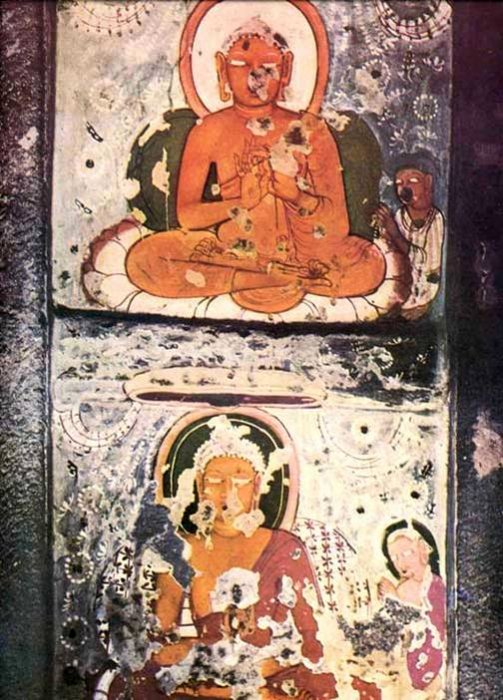
Two Buddhas, Cave 10
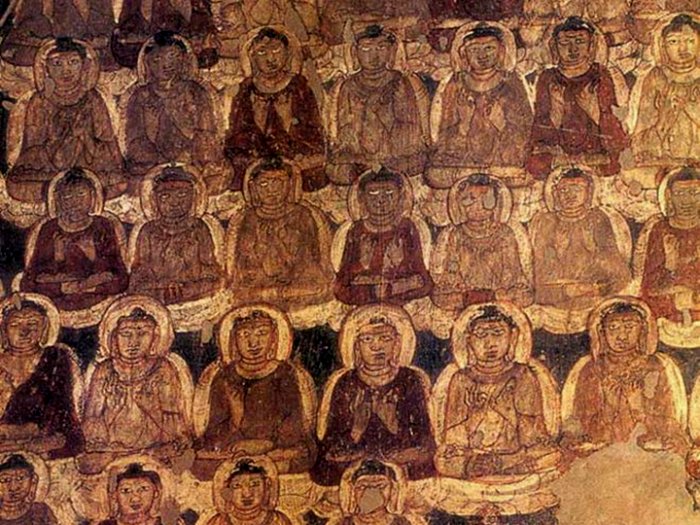
Miracle at Shravasti, Cave 2
In place of shapely palms and sensitive
fingers, they are rather stiff and simplified. The countenance lacks
expression.
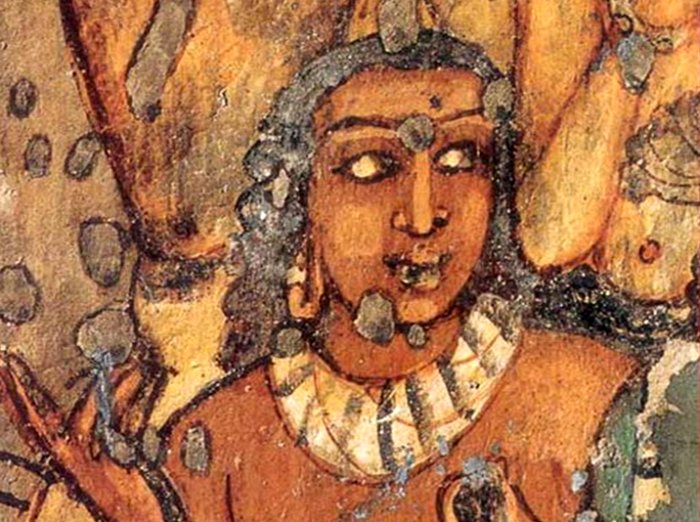
An Unidentified Scene, Cave
1
Back
|